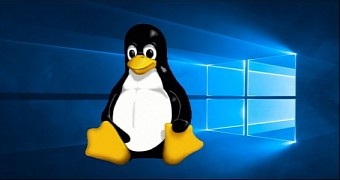Linux has long been considered the underdog of the desktop operating system world, as many believed that giving up on Windows and embracing anything like Ubuntu, Linux Mint, or others made absolutely no sense.
Many of these people pointed to the gaming support in the Linux world, while others claimed that no matter how much is improved, Linux would never replace Windows simply because it lacks the familiar approach that’s making Microsoft’s operating system the preferred choice for so many users out there.
But the most recent statistics show that the adoption of Linux is improving at a really fast pace, and while it’s still far from overtaking Windows, all these numbers suggest that sooner or later, choosing an operating system doesn’t just come down to Microsoft and Apple products.
While Linux has gradually improved its market share in the last few years, a more notable growth has been experienced in 2020, and the month of May brought a new personal record in this regard.
Lat month, for example, Linux reached a market share of 3.17 percent, still far from Windows (86.69 percent) and macOS (9.68 percent), but still the biggest adoption it ever recorded.
A closer look at these numbers show that the growth experienced by Linux is mostly powered by Ubuntu. In May, Ubuntu accounted for 64.98 percent of all Linux installations, while a generic “Linux” entry represents over 33 percent, according to NetMarketShare data.
Other popular Linux distros include Fedora, Linux Mint, Slackware, and Debian, all with a rather small market share.
So what’s been changed and why is Linux growing at such a fast pace? There are basically two reasons.
First and foremost, it’s the end of Windows 7, which is forcing many users out there to look for an alternative operating system. Windows 7 no longer getting security patches and other updates means devices still running it are all abandoned, and those not willing to upgrade to Windows 10 look elsewhere for an operating system that just gets the job done.
Some Windows 7 users want to stick with a traditional desktop experience, and they think that Windows 10 fails to deliver it given it bundles modern features like an app store, Cortana and others. So these people move to Linux in an attempt to stick with the desktop experience that they just love.
And second of all, it’s Linux reaching a new phase that makes the operating system overall more user friendly. For users coming from the Windows world, getting used to the Linux world is the biggest challenge, so right now, it’s essential for every distro to make these people feel like home.
The Linux ecosystem has expanded with the addition of new distros that are specifically supposed to serve as the new home of Windows users, so they come with a familiar interface that includes everything from the Start menu to a visual style inspired from the one developed by Microsoft.
And while Ubuntu remains the champion in the Linux world, all these distros ease the transition from Windows to Linux, eventually having a major contribution to the future of this ecosystem.
Linux is undoubtedly set to continue its growth and there’s a chance it gets even closer to macOS in the coming months. Of course, it’ll take a long time until Linux can even think of overtaking Windows in terms of market share, but for the time being, the short-term plan should be continued growth on a monthly basis. Linux is just doing the right thing at this point, so if you’re looking for a future beyond the world of Windows, there’s no better time to try out Linux than now.

 14 DAY TRIAL //
14 DAY TRIAL //